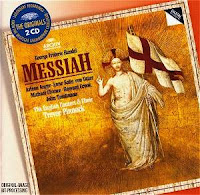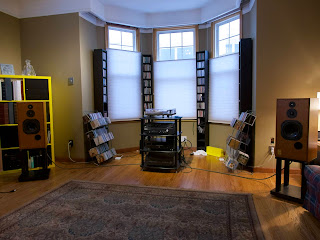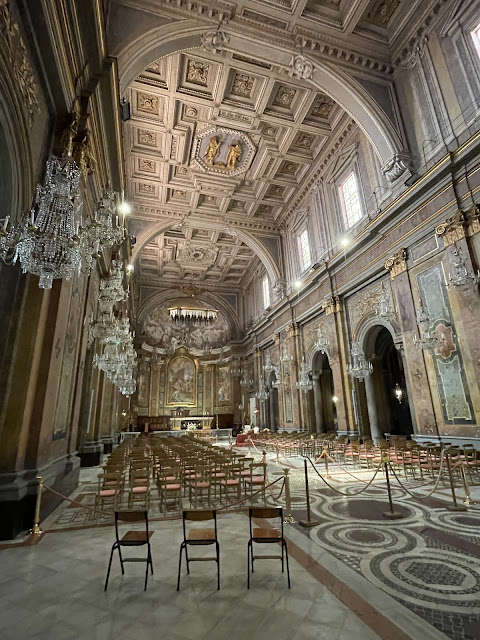O Come, O Come Emmanuel
While a local radio station happily announced that it would be playing Christmas music from the last week of November until Christmas Day all day every day, we who follow the liturgical calendar of the Church are singing along with the rich hymns that accompany the Advent Season.
One of the things I really like about many of the Advent hymns is that they are sung in a minor key or at least include a few sharps and flats. Try the Old Basque Carol, for example, http://www.youtube.com/watch?v=JfSBzd2ddPk&feature=related.
These hymns communicate God's coming from a place of stillness. As we shall soon revisit the simplicity of the manger scene we will come to a new experience of God's presence dwelling with us by entering into the realm of the simple, the quiet and the still.
In Canada, when winter comes fully we are blanketed not only visually with snow but also aurally. Snow absorbs sound and visually it makes the confusing world we live in seem more uniform -- all in white. So we are invited rather naturally to experience the world in a new way.
 It has been traditional among some of our Christian brothers and sisters to attend performances of George Frederick Handel's most famous oratorio, "Messiah". The "Alleluia" chorus that is the central point of the work, though, is not announcing Christ's birth, but His resurrection. Only the first part of the three parts is devoted to a scriptural meditation on the incarnation or birth of Jesus. This work, however, has been a feature of the English world's observance of this time of year for the better part of two centuries. There will be many performances in Toronto and environs including "sing-a-long" versions.
It has been traditional among some of our Christian brothers and sisters to attend performances of George Frederick Handel's most famous oratorio, "Messiah". The "Alleluia" chorus that is the central point of the work, though, is not announcing Christ's birth, but His resurrection. Only the first part of the three parts is devoted to a scriptural meditation on the incarnation or birth of Jesus. This work, however, has been a feature of the English world's observance of this time of year for the better part of two centuries. There will be many performances in Toronto and environs including "sing-a-long" versions.

I have two recordings. One is very Victorian conducted by Georg Solti and the other is on original instruments led by Trevor Pinnock with a more historically accurate group of singers and choristers giving a performance much more like that of the 1740's when this piece was first performed.
One of the things I really like about many of the Advent hymns is that they are sung in a minor key or at least include a few sharps and flats. Try the Old Basque Carol, for example, http://www.youtube.com/watch?v=JfSBzd2ddPk&feature=related.
These hymns communicate God's coming from a place of stillness. As we shall soon revisit the simplicity of the manger scene we will come to a new experience of God's presence dwelling with us by entering into the realm of the simple, the quiet and the still.
In Canada, when winter comes fully we are blanketed not only visually with snow but also aurally. Snow absorbs sound and visually it makes the confusing world we live in seem more uniform -- all in white. So we are invited rather naturally to experience the world in a new way.
 It has been traditional among some of our Christian brothers and sisters to attend performances of George Frederick Handel's most famous oratorio, "Messiah". The "Alleluia" chorus that is the central point of the work, though, is not announcing Christ's birth, but His resurrection. Only the first part of the three parts is devoted to a scriptural meditation on the incarnation or birth of Jesus. This work, however, has been a feature of the English world's observance of this time of year for the better part of two centuries. There will be many performances in Toronto and environs including "sing-a-long" versions.
It has been traditional among some of our Christian brothers and sisters to attend performances of George Frederick Handel's most famous oratorio, "Messiah". The "Alleluia" chorus that is the central point of the work, though, is not announcing Christ's birth, but His resurrection. Only the first part of the three parts is devoted to a scriptural meditation on the incarnation or birth of Jesus. This work, however, has been a feature of the English world's observance of this time of year for the better part of two centuries. There will be many performances in Toronto and environs including "sing-a-long" versions.
I have two recordings. One is very Victorian conducted by Georg Solti and the other is on original instruments led by Trevor Pinnock with a more historically accurate group of singers and choristers giving a performance much more like that of the 1740's when this piece was first performed.

